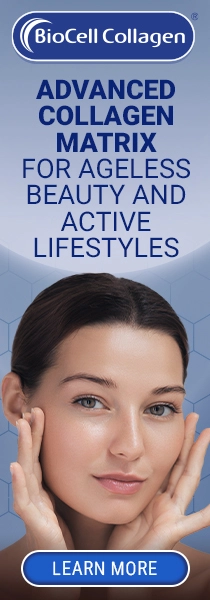Growing Scientific Support Emerging for Lutein’s Eye Health Benefits
Consuming lutein and zeaxanthin – through dietary sources or food supplements – increases macular pigment optical density (MPOD) in human eyes. Studies suggest that higher levels of MPOD are associated with a decreased risk of age-related macular degeneration (AMD) and improved visual function.

3/25/2011 --- At a congress convened in Schloss Hohenkammer, Germany, world-renowned experts agreed the vital role of lutein in eye health has been demonstrated by numerous studies and clinical trials. Deposited in the macula and lens, lutein acts as “internal sunglasses” protecting the eyes against light-induced oxidative damage. The most clinically researched lutein brand worldwide is FloraGLO Lutein. During the congress “Lutein and its benefits to eye health”, sponsored by DSM Nutritional Products Europe Ltd. and Kemin Industries, Inc., experts presented the latest research and information on this essential carotenoid.
Healthy vision is one of the most important factors for quality of life. However, age-related eye diseases, such as age-related macular degeneration (AMD) which is the leading cause of irreversible blindness among elderly people in developed nations, increase as populations continue to age. Epidemiological evidence links the benefits of the carotenoids lutein and zeaxanthin to improving eye health. Lutein absorbs blue light and acts as a filter that may reduce photochemical damage caused by short-wavelength visible light. Consuming lutein and zeaxanthin – through dietary sources or food supplements – increases macular pigment optical density (MPOD) in human eyes. Studies suggest that higher levels of MPOD are associated with a decreased risk of age-related macular degeneration (AMD) and improved visual function.
FloraGLO Lutein is manufactured by Kemin Health, a division of Kemin Industries. It is intended for inclusion in food supplements or as an ingredient for use in foods and beverages. Kemin and DSM joined forces working under an exclusive strategic alliance to commercialize globally FloraGLO Lutein products. DSM lutein beadlets are formulated using the patented Actilease technology which provides both excellent stability and superior bioavailability.
The latest scientific research on the biological significance of lutein was presented by Prof. Paul Bernstein from the Moran Eye Center, University of Utah. “Our focus is to understand mechanistically how and why the macular pigment carotenoids are concentrated in the human foveal region at the highest concentrations found anywhere in the human body,” Bernstein said. His research identified selective, high-affinity binding proteins for lutein, zeaxanthin, and their metabolites. Bernstein provided insights on future directions of research to clarify the role of these proteins in retinal physiology and pharmacology. Furthermore, he discussed emerging non-invasive approaches such as in vivo resonance Raman spectroscopy and lipofuscin autofluorescence to quantify and image macular pigment in the living human eye.
Improvements in visual performance and comfort parameters have been associated with lutein and zeaxanthin supplementation. Prof. B. Randall Hammond from the University of Georgia presented results confirming earlier reports of a significant relationship between the variation in retinal concentrations of lutein and zeaxanthin and the immediate effects on visual function like photo stress recovery, glare disability and chromatic contrast sensitivity. “As with many species, intra-ocular yellow filters in humans appear to improve many aspects of the visual stimulus,” Hammond concluded. How FloraGLO Lutein helps to reduce the progression and risk of AMD is currently being evaluated by the Age-Related Eye Disease Study 2 (AREDS2) which was introduced and discussed during the congress by Mina Chung, Ph.D., from the Flaum Eye Institute, University of Rochester. This on-going clinical study evaluates the effects on subjects with AMD of treatment with FloraGLO Lutein and zeaxanthin alone or in combination with omega-3 fatty acids. Initial results are expected by 2013.
Exploring the effectiveness of lutein supplementation, the bioavailability of lutein plays an important role. Low serum levels of lutein are associated with increased AMD risk5. “Current data suggests great variability in serum response following lutein supplementation from various sources,” Prof. Edward P. Norkus, Ph.D., from the Montefiore Medical Center in New York told the audience. His new findings showed a significantly greater relative serum lutein response from supplements containing free lutein, such as FloraGLO Lutein, than from supplements that contain lutein esters. Subject age, gender, BMI and serum lipids did not affect serum response.
It is not only the lutein form, but also the formulation technology that can have a significant impact on the bioavailability. Recent research demonstrates the superiority in bioavailability of FloraGLO Lutein with Actilease beadlet technology that formulates lutein into micro-sized particles protected in a water-soluble shell. This topic was covered by Wolfgang Schalch, Ph.D., from DSM Nutritional Products.
The congress determined that lutein has a positive impact on different parameters of eye health. Many studies show that supplementation with FloraGLO Lutein increases MPOD levels, improves visual function and reduces the risk of age-related eye diseases. Thus, increasing the consumption of lutein may be a safe, easy and effective measure to improve macular health. Further studies like AREDS2 will provide more evidence of the efficacy and benefits of long-term FloraGLO Lutein supplementation in eye health.















